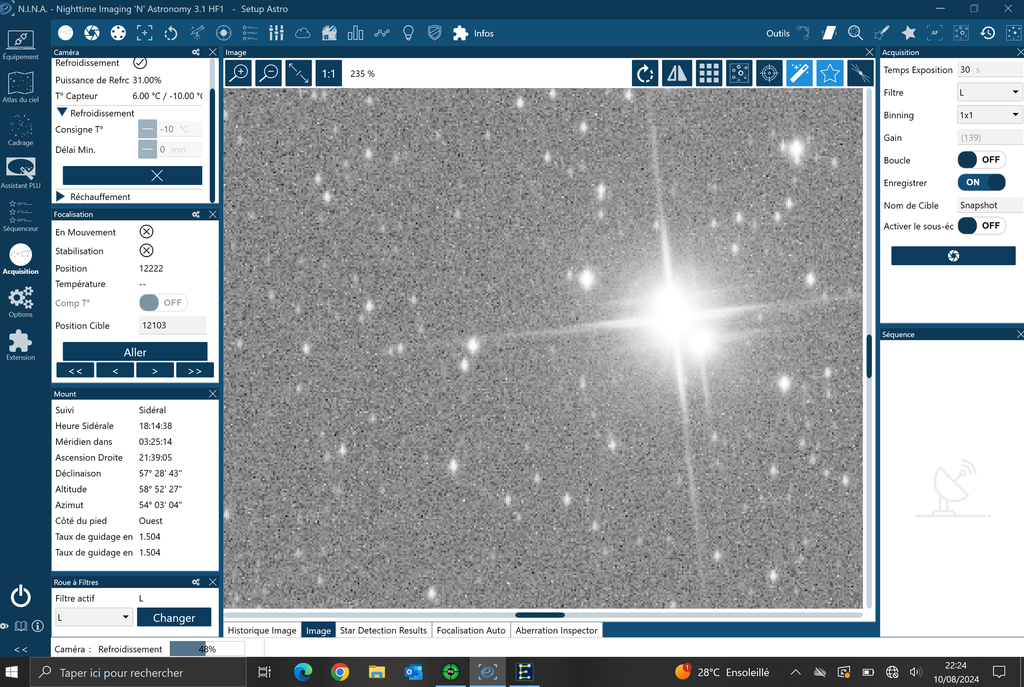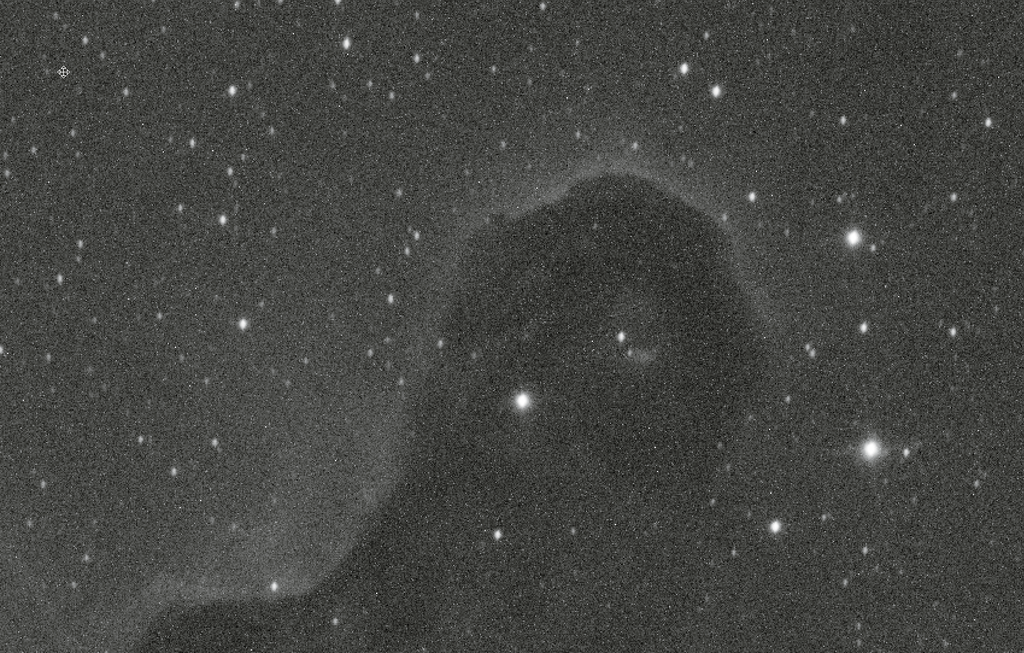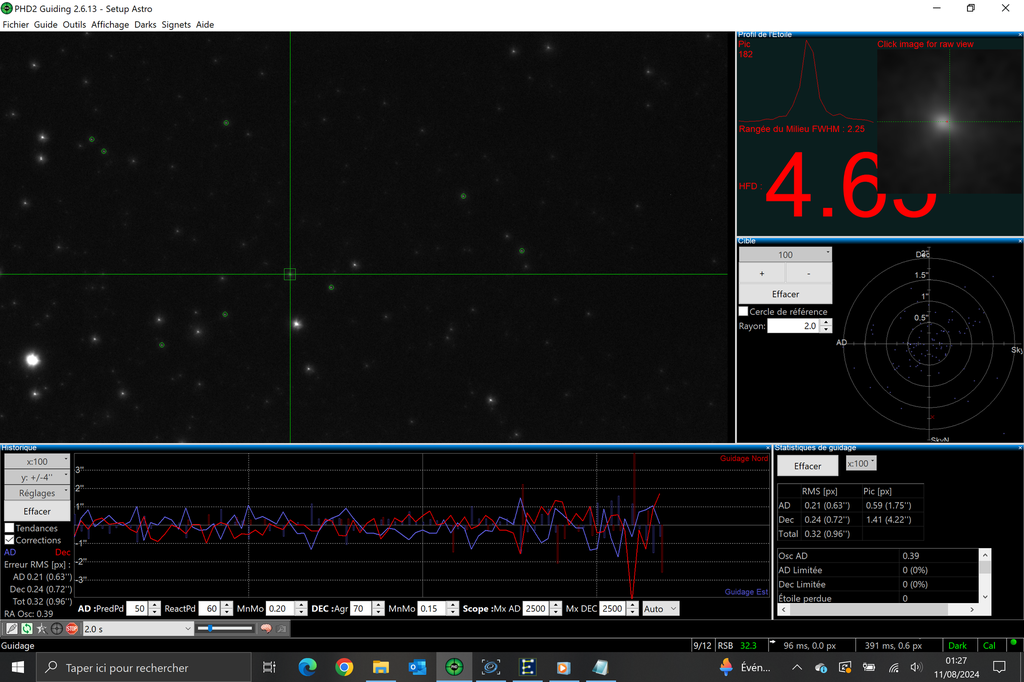I'm reaching out because I'm having some difficulties getting an image that I am perfectly satisfied with.
Here’s my setup:Newton Lacerta Carbon 200/800 + ZWO ASI 1600 MM Pro
Guiding with ZWO ASI 120 Mini + 60/240 guide scope
AZEQ6 mount
Last night, during my photo session, I encountered an issue with uniform star elongation across the entire field.It looks something like this:


I believe my guiding is the source of the problem. Here’s a small photo from PHD2:
 In my opinion, star elongation like this would result from defective tracking, correct?
In my opinion, star elongation like this would result from defective tracking, correct?The polar alignment is good since it was done with the Polemaster, but nonetheless, if I don't activate the tracking, I see almost immediate drift. Strange, isn’t it?
Additionally, I realize that the shape of my stars in PHD2 is not good and could be causing these problems.
Thank you for your feedback and opinions.
Valentin


